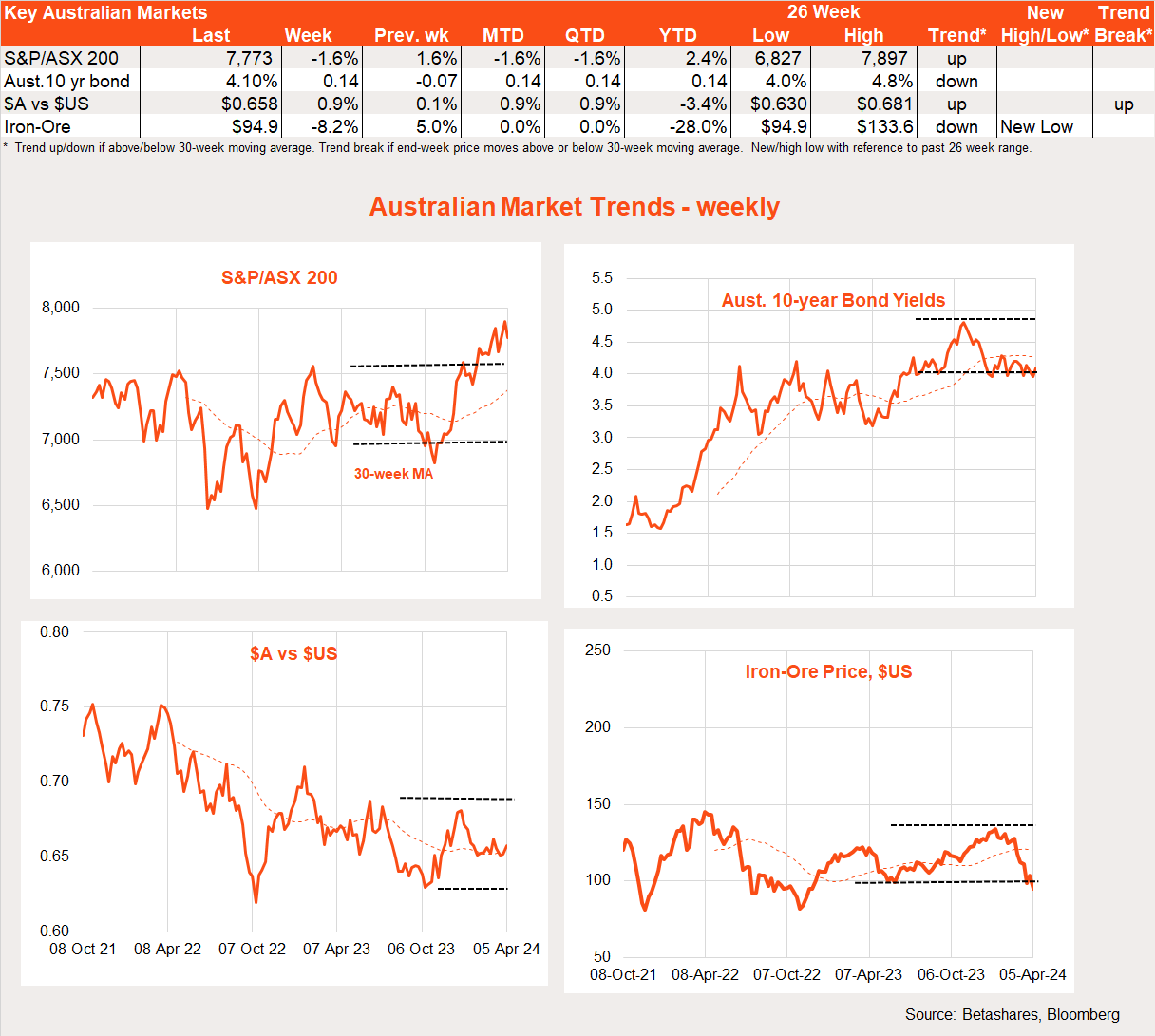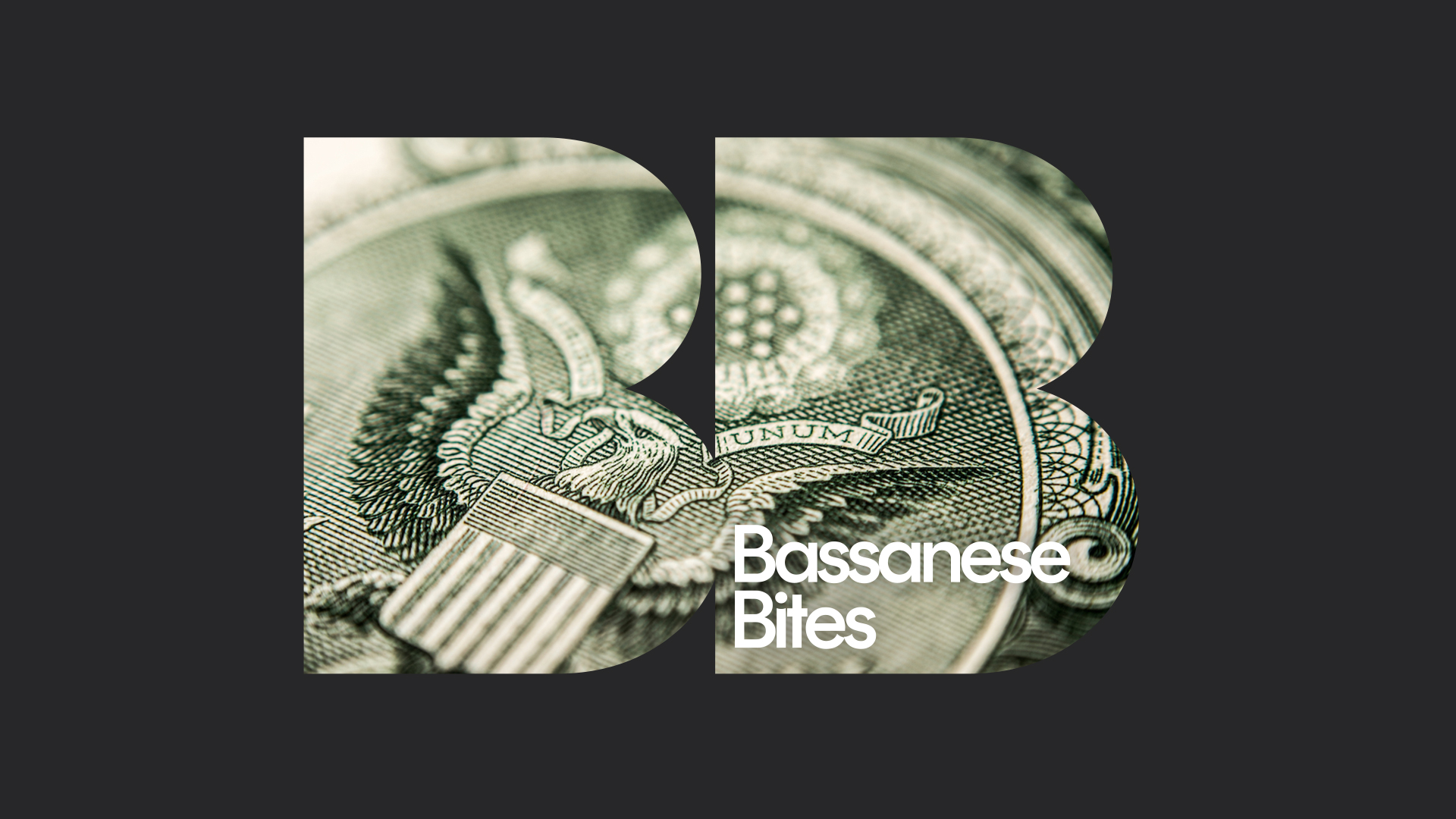ETF distributions: frequently asked questions
4 minutes reading time
- Global shares
Global markets – week in review
It was largely a case of good news is bad news again on Wall Street last week, with a series of stronger-than-expected activity reports pushing back rate cut expectations further – pushing up bond yields and pushing down equity prices in the process.

Equity prices have withstood the moderate rebound in bond yields so far this year, but with valuations stretched – both in outright PE and relative equity-risk price premium terms – they could be nearing a breaking point where a deeper correction develops. Also not helping is the rebound in oil prices on simmering Middle East tensions, with new risks that Iran could be dragged into a conflict with Israel.
The highlights last week were stronger-than-expected reports on US manufacturing, job openings and the March payrolls report. The US ISM manufacturing report pushed above 50, suggesting the sector is finally recovering from its post-COVID slump. Job openings failed to decline as expected and remain at a relatively high 8.8m. And there was a much stronger-than-expected 303k gain in employment during March (market 200k), allowing the unemployment rate to drop back to 3.8% from 3.9%. The saving grace in Friday’s payrolls report – and which likely stemmed a potential further equity decline – was the 0.3% gain in average hourly earnings (in line with market expectations), which saw annual wage growth ease further to 4.1% from 4.3%.
Israel’s strike in Syria, which killed a top Iranian military commander, has created new tensions, with oil prices lifting 4.5% last week, to be up 21% year to date.
The upshot of all this is that the US market now anticipates only two Fed rate cuts later this year – compared to the six expected at the start of the year. US 10-year bond yields lifted 0.2% to 4.4% last week, compared to a low of 3.88% around Christmas.
Also steadying markets to a degree, however, is ongoing commentary from the Federal Reserve (including from Powell himself) that rate cuts are still, at this stage, likely this year – although there is no hurry.
The week ahead
Against this backdrop, this week’s March reading on consumer (CPI) and producer (PPI) prices will no doubt be key – any major upward surprise could finally be the straw that breaks the back of the unrelenting equity market rally, at least for a time.
For what it’s worth, the market expects the monthly gain in the core CPI to ease back to 0.3% from 0.4% in February, allowing annual core inflation to ease to 3.7% from 3.8%. Monthly growth in the PPI is also expected to ease back to 0.2% from 0.3%.
The other highlight this week will be the start of the Q1 earnings reporting season, with a few major financials (JP Morgan, Blackrock and Citigroup) kicking off the beauty parade on Friday. As reflective of a strong economy, the earnings season is likely to be upbeat – but whether that’s enough to offset pressure from delayed Fed rate cut hopes remains to be seen.
Global equity trends
Looking at global equity trends, the rebound in bond yields is helping drag back the relative performance of growth over value, as evident in the pullback in Nasdaq-100 relative performance. Japan and Europe are also faring better, while Australia and emerging markets less so.

Australian markets
With little local news to digest, the S&P/ASX 200 pulled back 1.6% last week in line with global trends -while bond yields edged higher. The $A held firm despite a further 8% slump in iron-ore prices to below $US 100/tonne.

The only point of interest in the minutes from the latest RBA policy meeting was the decision not to formally contemplate a rate hike among policy options – further confirming the Bank’s gradual shift to a more neutral policy bias.
In other data, national house prices kept rising (is that news?), while ANZ job ads pulled back a little further – the latter consistent with a glacial slowing in labour market strength.
Local highlights this week will be an update on the state of consumer and business confidence with the Westpac/Melbourne Institute and NAB surveys respectively. Although there have been tentative signs of recovery of late, household confidence remains in a slump. Business confidence has been more upbeat due to strength in most other areas of the economy away from consumer spending.
Have a great week!





2 comments on this
David, thanks again for your summary. Your comment of our RBA reminds me of our BOM weather forecasting when they are wondering if El Nino or La Nina is coming or going. One minute all is stable, then like changing gears, in neutral, then oh, oh, here comes climate change, coupled with increasing ozone levels, 100 years+ of huge rain events, coupled with highest temperatures ever recorded, highest ocean temperatures and dying coral. Economics certainly is subject to our whimsical lifestyles and graphs. cheers.
This is my first look at your summary. Very good overview and straight to the point to confirm other info I have read over the past week. Definitely some interesting times ahead in both Aust and USA. Let’s hope inflation continues on the right trend down to save more of a longer term pain. Fingers crossed.